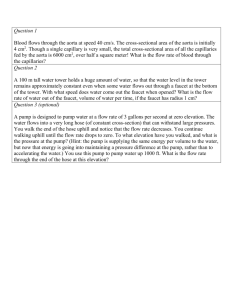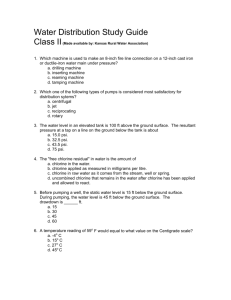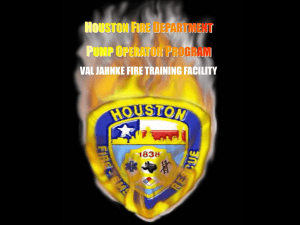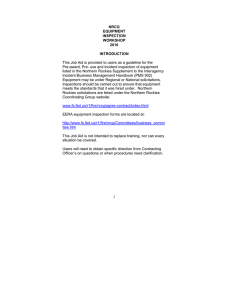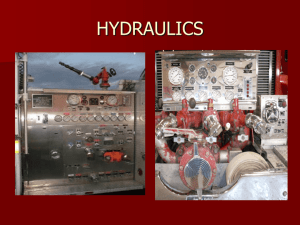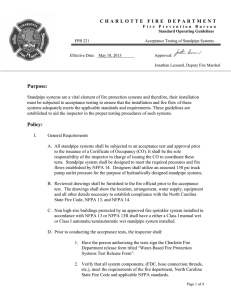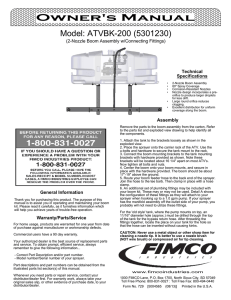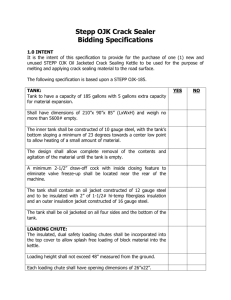fire pumps 101 - Fire Engineering Training Community
advertisement
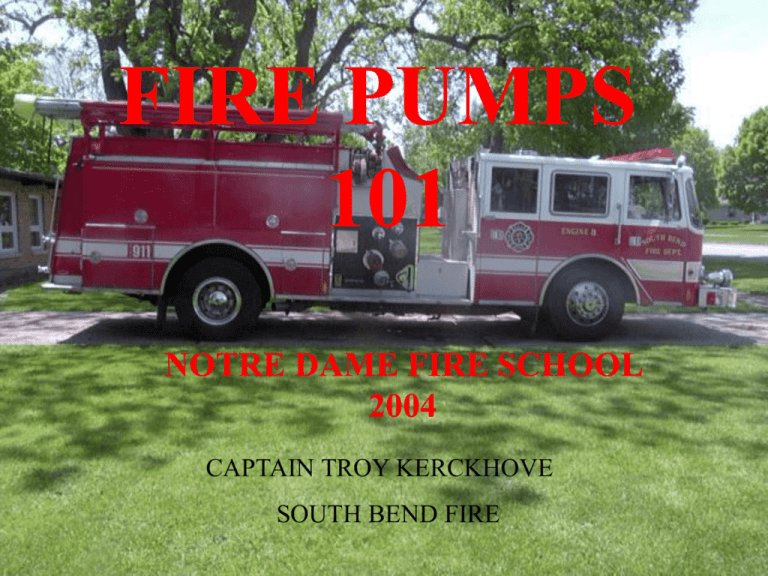
FIRE PUMPS 101 NOTRE DAME FIRE SCHOOL 2004 CAPTAIN TROY KERCKHOVE SOUTH BEND FIRE A LITTLE ABOUT ME •South Bend Firefighter 12 years •Wife and three kids •Captain of Engine 8 (in the hills) •EMT-adv •Shift instructor, flashover instructor •Hazmat team A LOT ABOUT YOU • • • • • • Name Department Years in the fire service Type of apparatus What do you want from this class Favorite color NOW LETS GET PUMPED UP FIRE PUMP THEORY • Why do you need to know and understand, how the pump work? – – – – Moving Water Making Pressure Maintaining Troubleshooting PUMP TYPES • Positive displacement – – – – – Original fire pump Used primarily as primers today Constant volume Will pump air Types • Piston • Vane • Rotor gear FIRE PUMPS • CENTRIFICAL – Based around the spinning disk – Volume dependent on supply – Types • Single stage • Series/parallel (two Stage) • Third stage high pressure – Used in today’s fire pumps THE TWO STAGE PUMP • Designed to operate in pressure and volume modes • Series used for high pressure lower volume (less than half rated volume) • Parallel used for high volume low pressure • Has some type of a change over valve THE RELIEF VALVE • Safety system for the firefighters on the hose lines • Must be used anytime more than one line is operation • Protects lines from over pressurization • Most operate from 70 to 300 psi • Must operate with less than a 30 psi surge • Will not operate if inlet pressure to high PRESSURE GOVERNERS • Maintains pressure by operating engine throttle control – Mechanical – Electronic MAINTANCE VS REPAIR • Prevent future problem • Keeps in working • Inspect to find defects • Complete on a regular schedule • Fixing what is broke • Replace worn parts UNDER THE HOOD • • • • • • • • • Engine oil Transmission fluid (automatic) Coolant Washer fluid Brake fluid Belts Hoses Batteries Leaks CHASSIS • • • • • • • Tires Other leaks Body damage Doors Brakes Steering Hose loads and equipment PUMP AREA • Inside and under – Leaks • Water • Other fluids – Primer oil level • Panel – – – – – – Move of valves Lights Gauges Line connections Change over valve Relief valve NOZZLES • Smooth bore – 50 psi • Set gallon fog – 100 psi • Low pressure fog • Automatic COMMON HOSE SIZES • • • • • • • 1” 1 ½” 1 ¾” 2” 2 ½” 3” Supply line MEASURING THAT WATER • Pressure – Force exerted by the water – Measured in pound per square inch (psi) – Or inches of mercury • Volume – Amount of water flowing – Measured in gallons per minute (gpm) NET PUMP DISCHARGE PRESSURE • NDP=FL+A+E+N – FL= FRICTION LOSS – A=APPLIANCE – E=ELEVATION • 5 PSI PER 10 FT OR 5 PSI PER FLOOR MINUS 1 – N=NOZZLE FRICTION LOSS • The amount of pressure lost, as water flows through hose and appliances • Points to remember – Flow goes up so does the loss – Smaller hose more loss – Kinks FINDING FRICTION LOSE THE HARD WAY • FL=CQ2L • Examples – 200’ of 13/4” hose flowing 200gpm • 15.5x22x2=124psi – 1000’ of 5” flowing 1000gpm • .08x102x10=80psi FRICTION LOSS MADE A LITTLE EASIER • • • • • Hand method Flow methods Charts Predetermined settings Hose team yelling at you CONDENSED Q FORMULA • • • • FL per 100 ft of 3” hose=Q2 200’ 3” flowing 500 gpm 52 25x 2=50 psi DRAFTING •Moving water from static source SETTING UP THE PUMP • • • • • • • Parking brake/ wheel chocks Neutral Shift transfer case Transmission in to correct gear Water into pump Someplace for it to go Set pressure FROM THE BOOSTER TANK • Open tank valve • Prime if needed – How long? • Place for it to go • Crack open tank fill • Remember limited supply of water, and limited flow FROM DRAFT • Air tight connections • Prime • Put water some where FROM PRESSURIZED WATER SOURCE • Bleed air out • Send water somewhere CHANGING OVER • Tank water to draft – May decrease discharge pressure • Tank to pressurized – Will increase discharge pressure TROUBLE SHOOTING • • • • • Loss prime No pressure No water movement Cavitation Relief valve not working

